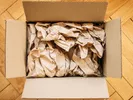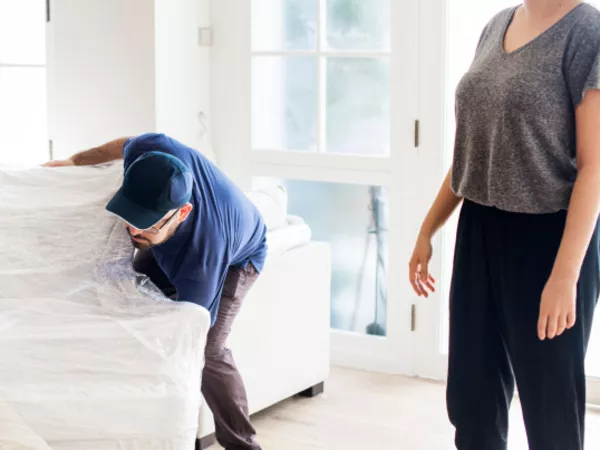Packing Paper for Moving
The #1 packing supply to have for your move
Packing paper is a great way to protect your belongings during a move. It's affordable, recyclable, and has endless applications when packing up your home. If you're unfamiliar with this packing supply and wondering why you should use it (and not just grab a bunch of newspaper), it's important to understand:
- What it is
- How it compares to other packing supplies
- How to use it
- How to reuse it
- How much you need

What is packing paper?
It's single-ply, professional-grade, unprinted paper. It's ideal for wrapping items, adding support to fragile pieces, and filling empty spaces in boxes. Since it comes in large bundles, it can be a great value. And the best part? It's recyclable!
Packing paper vs. newspaper vs. Bubble Wrap®
When it comes to packing paper vs. newspaper, packing paper wins every time. It doesn't transfer ink onto your hands or your belongings — who wants to clean ink off dishes on move-in day? Newsprint also crumples tighter than packing paper, so it may not provide the support you need to keep things safe inside the moving box.
While Bubble Wrap is good for protecting very delicate items and electronics, not everything requires that level of protection. Packing paper takes up less space than Bubble Wrap so you can fill the box with more items (not just packing materials). Packing paper is also considered more environmentally friendly since it's easily recyclable.
How to use it for your move
There are countless ways to use packing paper, but the primary uses are wrapping items and filling space in boxes.
- Wrap breakable items, like cups, figurines or vases. Packing paper holds its shape once it's folded, but if you want to keep things tightly bound, add some tape to secure it.
- Fold the paper around flat items. Wrap things like picture frames or books like you would a present, then stack them in a box.
- Fill spaces in boxes so items don't shift during transit. Place a few sheets in the bottom of a box for padding and then place them between wrapped pieces as buffers.
- Use it to separate similar items. If you're packing items that can be stacked, place a sheet between each item, and then wrap the entire bundle. For example, place a sheet between plates before packaging them together.
- Insert crumpled paper inside items. This helps things like shoes and purses hold their shape and gives fragile pieces like cups and vases more support.
For specifics on using packing paper for the items in your home, check out our packing tips and how-to guides.
Reusing packing paper after moving
Since it's unprinted, there are several ways to reuse packing paper after your move:
- Wash windows. Use packing paper to clean windows since they won't leave lint behind.
- Use it in the garden. Lay down a single layer before the final layer of soil as a weed barrier.
- Help items keep their shape. Stuff paper into boots, hats and purses to help them hold their shape in your closet.
- Recycle it. Check with your recycling center about their requirements (e.g. you may need a special bin for bulk paper).
How much do you need?
When buying packing paper (either online or from a moving supply retailer), you’ll find bundles of varying sizes. Buying in bulk can save you money, so it’s helpful to know how much you might need so you can get the right-sized pack. Here's how to estimate how much you need:
- 200 sheets: ideal for a studio apartment or one-bedroom home
- 500 sheets, great for multiple room home or a dish collection
- 1,000 sheets, perfect for larger homes or many fragile items
- 2,000 sheets, great for 6+ bedrooms or multiple collections
Still have questions?
If you need help figuring out how much to buy or how to use it for your move, leave us a comment below. We're here to help!
More articles you might like...



